Mission Day 722: 12:47 hours
Ganymede Base Alpha, underground
Second Shift
Short period comet Murakami-Honda entered the Jovian system and set off the JSDA at 12:47 hours. Inside his underground facility, First director David Chenowith hit the button to silence the alarm, began recording, and watched the comet through the array’s network of cameras on his telescreen. It wasn’t large, but it had an unusually high mass and would pass close enough to Ganymede on its way into Jupiter that there would be serious disruptions. He was glad he was so deep in the interior of Ganymede—he wouldn’t have to worry about anything more serious than a rattling, but the crew of Ganymede Base would likely not survive.
Chenowith would pass the data onto the Earth station Mission Council. They would need to know every detail so they could prepare the next crew to inhabit the station. This entire event would be classified on a need-to-know basis, the only personnel to hear about it would be the construction grunts from the Company ferried out by the Space Corps to rebuild the installation and clean up what was salvageable. They were all cleared as top secret Company officers. As Chenowith prepared the data to send, he watched the comet continue on its path toward Jupiter. He continued his calculations and recordings.
The comet raced ever onward, pulled in by the sun, and shearing toward Jupiter because of Jupiter’s massive local gravity well. The comet’s tail was already brilliantly lit this far out in the system, outgassing cyanogen, water ice, C02 ice and other elements. It had a core of nickel/iron, ice, rock and other ores that gave Comet Murakami-Honda considerably more gravitational impact than most. Chenowith continued recording. This would be the closest Ganymede had been to a comet impact in his career, since the Company had been keeping track. It was a first, and a scientific curiosity.
Ganymede’s orbit was in an unfortunate position in relation to Jupiter and Murakami-Honda—they were both in almost perfect alignment with the sun. Chenowith had run the calculations over and over again, and while there was no chance of a direct impact with Ganymede, the gravitational perturbations would cause unyielding stresses on the moon’s surface. It would crack up the installation like an eggshell. Easy come, easy go, thought Director Chenowith. They wouldn’t be the first crew to die in space.
The day before, Chenowith had put the autobots that ferried H-3, water and oxygen from various stations such as Io to him on hold so they would not be affected by this event. He had supplies for his fusion reactor socked away; it wouldn’t inconvenience him a bit. As the comet grew closer, Chenowith began recording video from all the cameras on the Ganymede mining station, inside the base, the external angles—the Company would want every last moment for analysis.
The crew of Ganymede Mining Base was going about their business, blissfully ignorant of what was about to befall them. Technician Jensen was preparing to suit up to go onto the surface for his duty assignment. He’ll never survive, Chenowith thought. He turned to the JSDA camera and watched Murakami-Honda continue in. No one had ever been this close to a comet before in human history. This was one of the primary reasons that Chenowith was out here, to help study the ongoing impact of comets on life in space. While it was a once-in-a-blue-moon affair, scientifically speaking, it would be invaluable data, as freak an occurrence as it was.
Technician Jensen was outside the base, now, flouncing over to the radio shack. Chenowith watched with a keener sense than usual knowing that this would very likely be Jensen’s last duty—to direct the radio shack’s antennae toward the JSDA so it could pass on every last bit of data about the base’s last moments in crystal clarity. Chenowith felt no remorse, it was just another day in the Company for him. This was as exciting as his life ever got.
Jensen climbed up with a jump to the top of the radio shack and began his work repositioning the antennae. Chenowith zoomed in with an external camera to make sure that he was doing it right. Not that he could communicate with any of them now, that would be a dead giveaway. But still, it was part of his job to monitor the last duties of this crew. Jensen dutifully turned the dials that shifted the first and secondary antennae toward the JSDA. When he had completed that task, he manually moved the tertiary antenna, which took some effort and time. He had to line it up exactly, which required the use of his in-suit computer to insure the alignment.
Once finished, he radioed in that the work was complete and hopped off the roof onto the surface. Jensen made his way back toward the base, about a three-minute flounce. That’s when the moonquake started. The cameras in the base that Chenowith had been monitoring went offline, so he turned his attention to the astronomical event itself, eager to watch the rest of the show.
The comet roared by Ganymede, less than 70,000 kilometers away. Chenowith felt a deep rumbling from Ganymede’s iron core; the mantle shook and the icy crust with it. Down here in his core, he was safe from all but a direct strike, but it was still too close for comfort. In a few minutes, Comet Murakami-Honda would be swallowed up by Jupiter, and he would send the results of his observations on off to Earth Control.
First Director Chenowith continued recording for another fifteen minutes until the comet actually impacted Jupiter; it struck with a brilliant flash that overpowered the camera until it could compensate with a filter. It would leave a black eye the size of the Earth on Jupiter’s visible surface for a few days, and then all trace of it would be gone, forever. Chenowith wrapped up his notes, recordings, and sent them off to his colleagues on Earth. He turned to his desk and began writing his after-action report.
Ganymede Base mining station was no more.
Mission Day 723: 15:30 hours
Ganymede Base Alpha, underground
Second Shift
It had been over a day since I’d received word that the Company had received my transmissions. The Company disavowed any knowledge of the incident. But they agreed with my estimation that this much time alone had driven the Director stark raving mad.
So no one will ever know what I went through, the Company would blame it on the Director, and since he’s dead, there’s no one left to take the fall. They’ll buy my silence, and put me out to pasture.
The radio squawked. “Hey, Will, you down there? It was pretty hard landing this thing. I’ve got a ladder for you, but I’m going to have to depressurize for you to get in. These shuttles are fast, but we’re really supposed to have a landing bay to accommodate passengers.” It was Captain Jim Stanton. Big Jim Stanton. Boy, was I glad to hear his voice.
“Copy that, Jim. I’ll be out in a few.” I powered down the console, screwed the helmet to my suit, and made my way back to the elevator.
God help whoever sits in that chair again, I thought, and hit the one single button in the elevator. Going up. Going home. I was going to make a new start, see my family and be glad I got away with my life.
I was going home.
~ The End ~
Return To Earth Later Today
For The Online Premiere of
Sean Manseau's
WE ARE SPACELORD!
AND WE COMMAND
YOU TO LOVE US!
Only On
the FREEZINE of
Fantasy and Science
Fiction





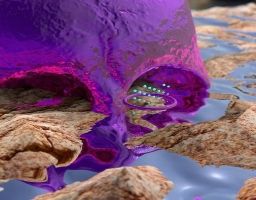
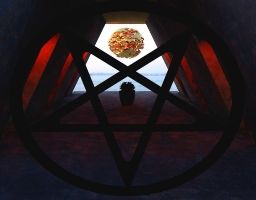




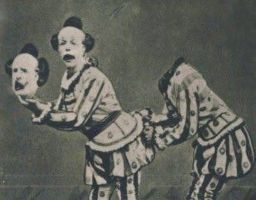
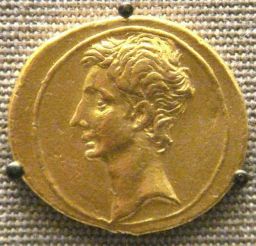




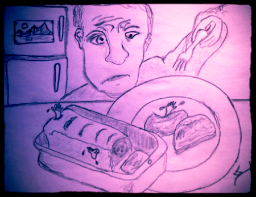
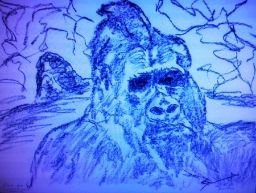

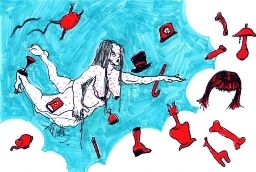

Wow. I really enjoyed the dual-timeline and use of flashbacks and flashforwards the author employed that advanced the story and the action in a way that not only lent itself well for chapters--it really is a novella--but also made me want to keep clicking, one after the other. And no ads! I'm going to jump into another one of these right away. Better than Audible!
ReplyDelete